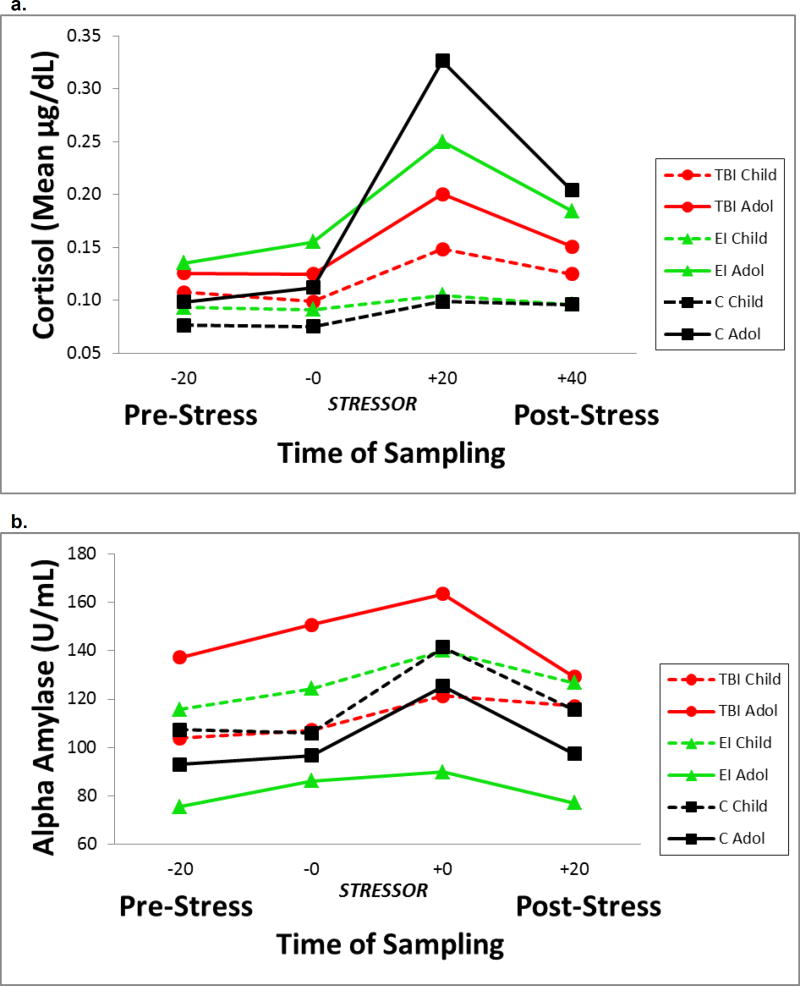Figure 1.
Salivary cortisol (1a) and alpha amylase (1b) values during the Trier Social Stress Test-Child version for children and adolescents with traumatic brain injury, extracranial injury and healthy participants
a. Significant group by age interaction for injured vs healthy groups. Cortisol values were higher in injured children, particularly those with TBI, than in heathy children. Values did not differ for adolescents. The injured groups showed a significantly attenuated cortisol response to the stressor compared to the healthy group, suggesting dysregulation of the HPA stress response.
b. sAA levels and reactivity did not vary in injured versus healthy participants. Compared to the EI group, sAA levels did not differ in children but were significantly higher in adolescents with TBI.

